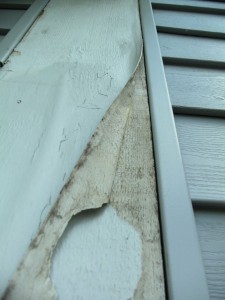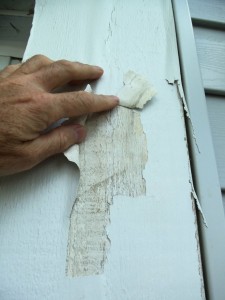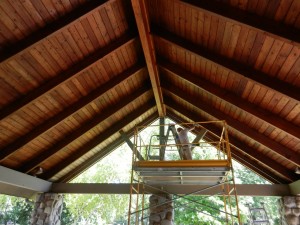When doing exterior painting, surfaces need to be cleaned and mildew spores have to be killed. In the Chicago area, professional house painting contractors know to clean and power wash surfaces before painting them. However, mildew can often be mistaken for dirt. Even though it looks like dirt, mildew has spores and is a living organism. When mildew is present, power washing or cleaning alone will not get the job done.
In order to grow, mildew needs three things in its environment: moisture, darkness and food. If mildew spores are not killed before the surfaces are painted, you have supplied darkness and sometime a bit of food to enable the mildew to grow. Especially on the sunny side of the building, the heat and cold cycles add condensation (moisture) to the painted surfaces. The net result of these different forces is: mildew will grow between the last two layers of paint and cause the last layer to fail and delaminate from the previous coat, as shown in our pictures.
When mildew is detected, it is essential to use a diluted bleach solution to kill the spores. In our case, we also use a specially formulated product, which includes a mildewcide and detergents, to help produce a more through cleaning of the surfaces. In Chicago and the Northern states, mildew is an ever present problem. It requires vigilance on the part of the house painting contractor. When in doubt, assume there is mildew and treat it accordingly.









 Follow
Follow

